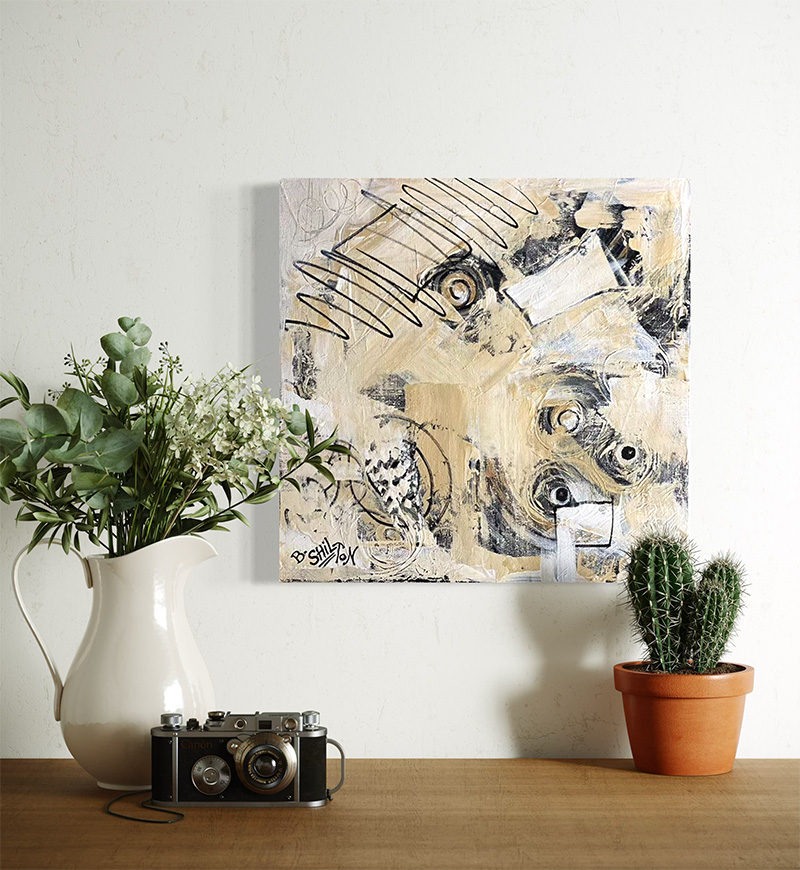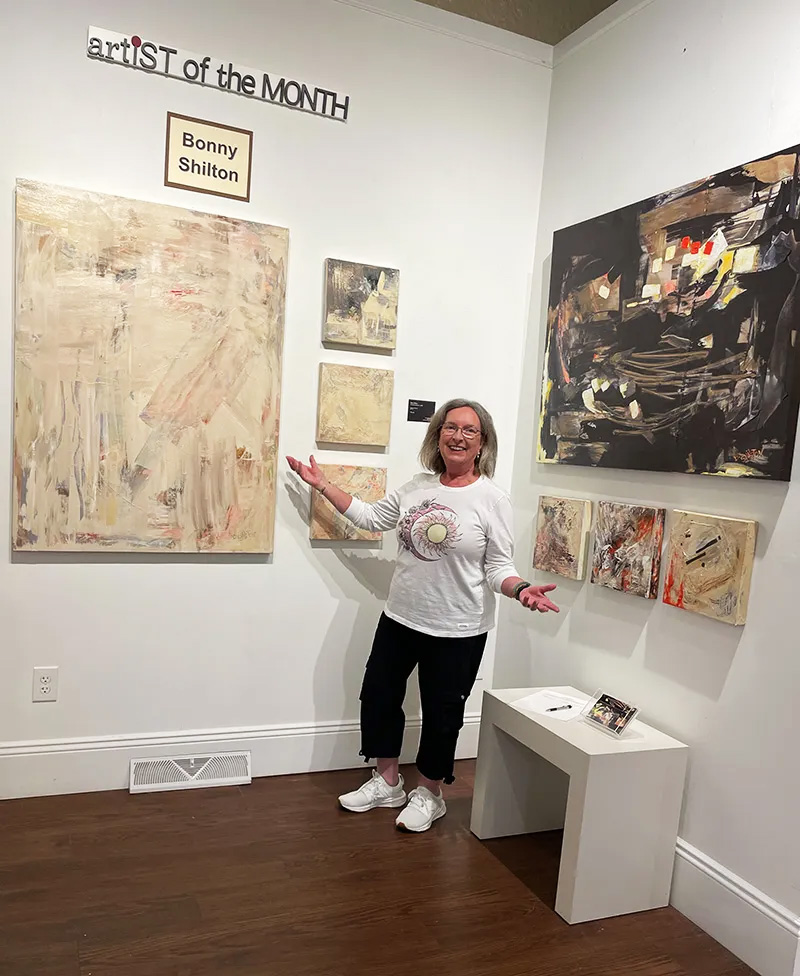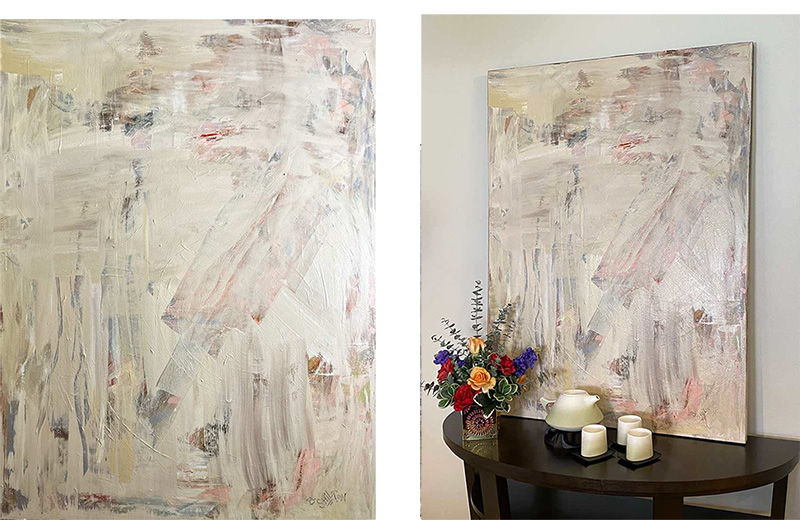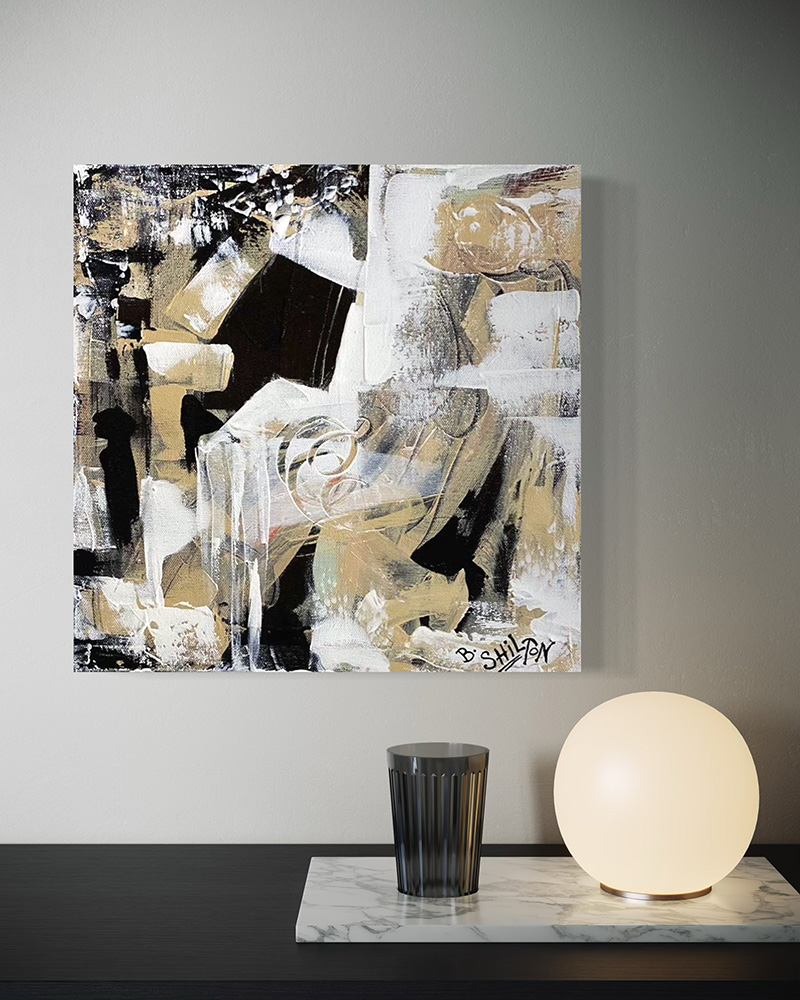We caught up with the brilliant and insightful Bonny Shilton a few weeks ago and have shared our conversation below.
Bonny, thanks for taking the time to share your stories with us today Are you happy as a creative professional? Do you sometimes wonder what it would be like to work for someone else?
I couldn’t be happier working as an artist. Creating art is a big part of who I am and I’m fortunate to be at a place in my life where I can do it full time. There’s not much difference between the art, the artistic process, and who I am as a person. When I wake up in the morning I’m already thinking about what to paint, what colors to use, how to solve the current artistic puzzle.
There are actually a lot of puzzles to solve when you paint — technical issues about preparing the canvas, what kind of paint to use, what’s the best way to apply it, how you should lay out the composition to lead the viewer’s eye around the painting, color choices, what will the colors communicate to the viewer.
One of my favorite parts of the process is naming the painting. First, I look at it. Then I usually close my eyes and sit with it for awhile. Then I just allow my mind to come up with a name that captures its essence.
Sometimes I’ll even choose a song to accompany the painting. You’ll see a link to it in the painting’s description on my website.
I encourage the viewer to see whatever speaks to them in the art. It’s all subjective and personal. My painting names and descriptions are just a jumping off point.
So, what’s creating art like compared to having a regular job? Well, I worked as a web designer for a while, and I also free-lanced. When you’re creating web sites your creative freedom is limited by the client’s business requirements.
But with painting, I’m not limited. I can do whatever I want. I can experiment or let the painting itself steer me, taking cues from it as it progresses. This is called intuitive painting and its something I do a lot.


Bonny, love having you share your insights with us. Before we ask you more questions, maybe you can take a moment to introduce yourself to our readers who might have missed our earlier conversations?
As far as how I got started, my first art sale was a bit of a mystery. I was in high school. A man came to our door and talked to my father. Then my dad came back in the house, handed me one of those big white candles, and told me I’d get $8 if I painted a bird on it. I don’t know who the man was or how he found me, but I painted the bird, got my $8, and just kept on going from there.
I’ve gone through a mural painting phase, a trompe l’oiel phase (3-d illusion), a sign painting phase, and a portrait phase, among others. And I’ve also gone long periods without making any art at all.
Today, I paint mostly large abstract canvases and Asian-inspired brush and ink pieces, which I studied through classes and studio work during the pandemic.
Something recent that I’m proud of is my new Chiclets collection. These are 12″ square abstract paintings that you can combine to make a gallery wall of any size, from narrow and vertical to 60 inches wide or larger. I named them Chiclets after the old time chewing gum because they’re cute and square and you can arrange them by color and make designs out of them, like I did when I was a kid growing up. (We didn’t have cell phones!)
Because I worked in my dad’s upholstery shop starting at age 17, and eventually ran it myself, I understand how art interacts with furniture and interior design. So, when I paint, I think about how the artwork will contribute to the overall feeling of a room. Whether it’s bright and fun or subtle and sophisticated, I create each piece with the knowledge that it’s going to be displayed in someone’s home.
A lot of my inspiration comes from action painters of the 1950s and 60s, like Franz Kline and other Abstract Expressionists, and from traditional Asian brush painting.
Both of these practices transfer the artist’s energy directly onto the canvas or paper. Your posture and your breathing even play a role. I’m also influenced by the Japanese philosophy of Wabi Sabi, which finds beauty in imperfection.


Are there any books, videos, essays or other resources that have significantly impacted your management and entrepreneurial thinking and philosophy?
I’ve had a lot of help along the way in the form of books, other artists, and synchronicity. I recently joined a coaching program that helps you take the next step to selling art in a more systematic way. One of the benefits is a weekly Zoom meeting with my “art pod”—four other artists in the coaching program. We learn from each other, keep each other accountable, and cheer each other on.
The book that sent me down this path is titled, Artpreneur, by Miriam Schulman. There’s a lot of good information in there. I highly recommend it.


What’s the most rewarding aspect of being a creative in your experience?
The most rewarding part is that, now at age 67, I can look forward to many more years of painting.
Creating art lets me use all the parts of who I am—intuition, logic, curiosity, and connection. It’s how I stay connected to other artists, to my clients, and to myself. I’ve committed to a lifetime of creating, and I’m not looking back!
Contact Info:
- Website: https://www.ShiltonArt.com







Image Credits
Bonny Shilton


